The seed for “Cabrini,” the soon-to-be-released biopic of America’s first saint, was planted nearly seven decades ago by a young man in a small church in Philadelphia.
The year was 1955 and J. Eustace Wolfington was just starting out in business. Born and raised in the City of Brotherly Love, he was 23 years old at the time.
A devout Catholic, Wolfington was hoping to fit in an early-morning Mass before the start of a long workday. By chance, he chose St. Donato Church, where he encountered a statue of St. Frances Xavier Cabrini, who founded the parish’s school in 1912.
Wolfington had never heard of Cabrini but was so intrigued by her remarkable story that he accepted the pastor’s invitation to attend a nine-day novena in her honor. Transformed by the experience, he embraced Mother Cabrini as his personal patroness.
“She was a great entrepreneur, and I was going into business, so I chose her as my role model,” recalls Wolfington, noting that he was inspired not just by her business acumen, but also her drive to build an empire with the singular goal of helping others.
“We all need role models,” Wolfington explains. “We need someone to set the standard to shoot for and Cabrini set the ultimate standard. No one could stop her because she had a much bigger vision of where she was trying to get. Her story is my story. Wherever she’s trying to go, I’m trying to go.”
Sickly since her birth in a small Italian town on July 15, 1850, Francesca Saverio Cabrini rose above her infirmities to form the Missionary Sisters of the Sacred Heart of Jesus 30 years later. From there, she bucked hierarchies on both sides of the Atlantic to establish the largest transnational humanitarian organization at the time, encompassing 67 hospitals, orphanages, schools and other institutions in 17 countries.
“She was an amazing, amazing woman,” Wolfington says, crediting her with being a true agent of change for the poor and uneducated, the sick and abandoned, women and immigrants alike.
With Cabrini as his guiding light, Wolfington created Half-A-Car Inc. in 1960, building his startup into a global network encompassing more than 4,000 dealerships. As he traveled the world, he was surprised to discover how few people, including Italians, knew anything about his patroness.
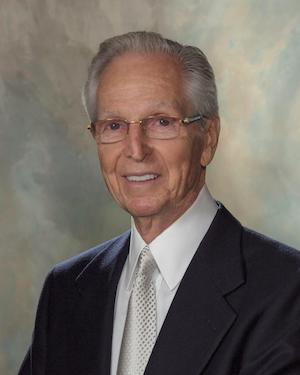
Following the sale of Half-A-Car in 2000, Wolfington has continued his entrepreneurial activities while making a significant commitment in support of Catholic institutions and charities in the Philadelphia area. To that end, he formed a family foundation, naming it Cabrini Asset Management.
Wolfington cut his filmmaking teeth in 2006 as a producer of “Bella,” a “tender tale of grace, faith, redemption and the sanctity of life,” according to one reviewer, that earned the People’s Choice Award at the Toronto Film Festival along with several other accolades.
When the then-president of Cabrini College, Sister Mary Louise Sullivan, approached Wolfington in 2011 with a request to produce a film about Cabrini, he initially turned her down, believing at the time that it would be “too much work.”
Taking a page from Mother Cabrini’s playbook, Sullivan persisted. Wolfington finally relented in 2018, but under two conditions: first, that he be allowed to make a movie about an extraordinary woman who just happened to be a nun, and second, that the film be a charity.
To the latter end, Wolfington formed Lodigiano Film Development Inc. — a 501(c)3 corporation named after Cabrini’s hometown — as a conduit for funds to produce the film. After the costs of production are covered, all proceeds will be donated to charitable causes, he says.
Early on, Wolfington approached Martin Scorsese for permission to use the script for a Cabrini biopic the legendary director once planned on making that would have starred Loretta Young. Scorsese told him he no longer had the script but advised him to find an Italian actress to play the lead role.
Wolfington set about the task of producing the film with the same rigor and passion he poured into the creation of his commercial empire.
“It took seven or eight interviews before I found just the right person” to write the script, according to Wolfington, who eventually teamed up with Rod Barr, writer of the award-winning drama “Is That You?” He and Barr then immersed themselves in Cabrini’s life, reading more than 20 books about the saint and traveling to Italy to spend time at her convent in Milan, the Vatican archives and other enlightening locales.
Wolfington then reunited with “Bella” director Alejandro Gomez Monteverde and began assembling his production team.
In a radical departure from the standard Hollywood production hierarchy, Mother Cabrini was designated the film’s executive producer. This wasn’t a publicity stunt or an honorary gesture, according to Wolfington, but a pivotal choice that shaped the film’s ethos and energized cast and crew alike.
“Everyone on the set had the script and books on her life and they were on fire every day,” he explains. “It comes across in the film.”
In pursuit of Scorsese’s recommendation, the casting director discovered Cristiana Dell’Anna, an actress whose previous credits included parts in several Italian films and TV shows. Italians were also recruited to play many of the film’s supporting roles.
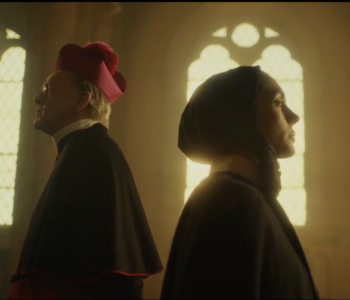 Lending star power to the project are veteran American actors John Lithgow as New York City Mayor Jacob Gould and David Morse as New York Archbishop Michael Corrigan and Italian screen legend Giancarlo Giannini as Pope Leo XIII.
Lending star power to the project are veteran American actors John Lithgow as New York City Mayor Jacob Gould and David Morse as New York Archbishop Michael Corrigan and Italian screen legend Giancarlo Giannini as Pope Leo XIII.
With such a sweeping story to tell, the creative team decided to focus on Cabrini’s early years in America, when most of her efforts were aimed at improving the lives of the teeming and desperately downtrodden community of Italian immigrants in New York City.
Shooting for the film began in 2021 on Cabrini’s birthday, with a robust budget of $50 million.
“That’s big for an independent film, and we did a $100 million movie on a $50 million budget,” Wolfington shares. “We have stunning visuals, a fantastic score, flawless acting and great dialogue. We created the film to stand the test of time. It is a beautiful piece of work.”
The film’s artistry expresses itself in countless ways, from the often-poetic dialogue to the masterful composition of the scenes. On the voyage to America, Cabrini stands in a darkened lower deck, her silhouette illuminated by a brightly lighted portal that looks for all the world like a halo around the head of the future saint. The same effect is achieved when she stands in front of an oval portrait of George Washington addressing a room of potential financial backers for her proposed hospital, symbolically linking America’s first president and first saint.
The production company’s painstaking attention to detail can be seen in the costly re-creation of the Five Points neighborhood, an Italian ghetto in Lower Manhattan where much of the early action takes place. Relying on an extensive library of photos, the crew constructed a set for those scenes in Buffalo, New York, choosing the city because of its wealth of turn-of-the-century buildings, according to Wolfington.
That devotion to authenticity is expressed throughout the film. For instance, sharp-eyed viewers will spot several statues and pictures of the Sacred Heart of Jesus, the patron of the order founded by Cabrini and the name she gave to some of her institutions. The rings and crucifixes worn by the actors were custom-made with the correct Latin inscriptions, and the flags flown in the background of the scene in the Italian Senate are accurate.
A particular challenge was the custom sewing of the distinctive veils worn by Cabrini and her sisters. The delicate checkered pattern was faithfully reproduced for the film.
The movie also captures Cabrini’s spirit in exacting detail. Her boundless devotion to the less fortunate and her relentless pursuit of quality education and health care on their behalf are brought vividly to life, as are her indomitable drive in the face of sometimes crippling infirmity and her refusal to take no for an answer from the most powerful men in Rome and New York City.
Wolfington and his team approached every major studio for backing before pivoting dramatically because they weren’t sure the Hollywood heavy hitters would market the film with sufficient vigor. Instead, they turned to Angel Studios, a company with Mormon roots that uses crowdfunding to finance high-quality, inspirational projects like the popular TV series “The Chosen.”
A minor miracle in the making, “Cabrini” is set for theatrical release on March 8. And if audience reactions at preview screenings across the country are any indication, the film will be a resounding success.
“It makes you want to be a better person,” said one audience member.
“I left feeling very empowered. That I had been called to question how I might go out and change the world,” said another.
“This movie is what we need today,” said a third.
“The story of Cabrini is powerful and universal, and we want to share it with the whole world,” Wolfington explains. “Our objective was to let her life be the message, let her life be the sermon.
“Her life is that light in our present darkness,” he adds. “Everyone should see this movie and be transformed by her life.”
For a review of the film, click here.
The above appears in the March 2024 issue of the print version of Fra Noi. Our gorgeous, monthly magazine contains a veritable feast of news and views, profiles and features, entertainment and culture. To subscribe, click here.
 Fra Noi Embrace Your Inner Italian
Fra Noi Embrace Your Inner Italian


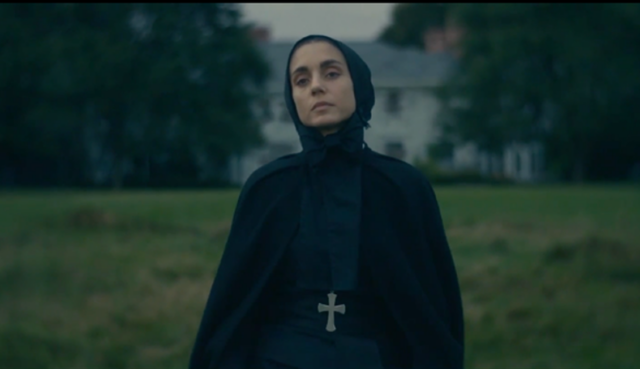

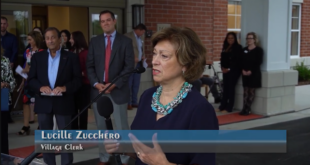
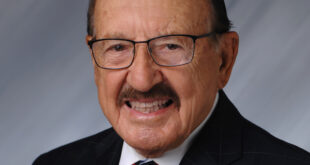



Before delving into Alejandro Monteverde’s feature film, I highly recommend watching Lucia Mauro’s insightful 2017 documentary, “Frances Xavier Cabrini: The People’s Saint.” This documentary delves deeply into the extraordinary woman behind the saint, her unwavering commitment to serving others, and the enduring impact of her work. Filmed on location in the saint’s hometown in Italy, at the National Shrine in Chicago, and in parishes dedicated to Mother Cabrini, the documentary includes interviews with devotees and is available in five languages.
Get ready to be inspired by the legacy of this incredible figure!
https://vimeo.com/ondemand/mothercabrinienglish
Thank you. I’m looking forward to watching it.
For a 92 year old healthy, American woman with a Catholic background, large family, a peace activist and Irish heart to attempt to share her opinion after watching the new film, Cabrini … the only word that serves the purpose is “Miracle!” Whether from the challenges of film making, spiritual, societal, feminist, etc. point of view, “Cabrini” is a “Miracle” by any standard. The world is a miracle, and as Einstein said when asked if he believed in miracles, “Open your eyes … everything is a miracle. This film could bring the Miracle of Peace on Earth!